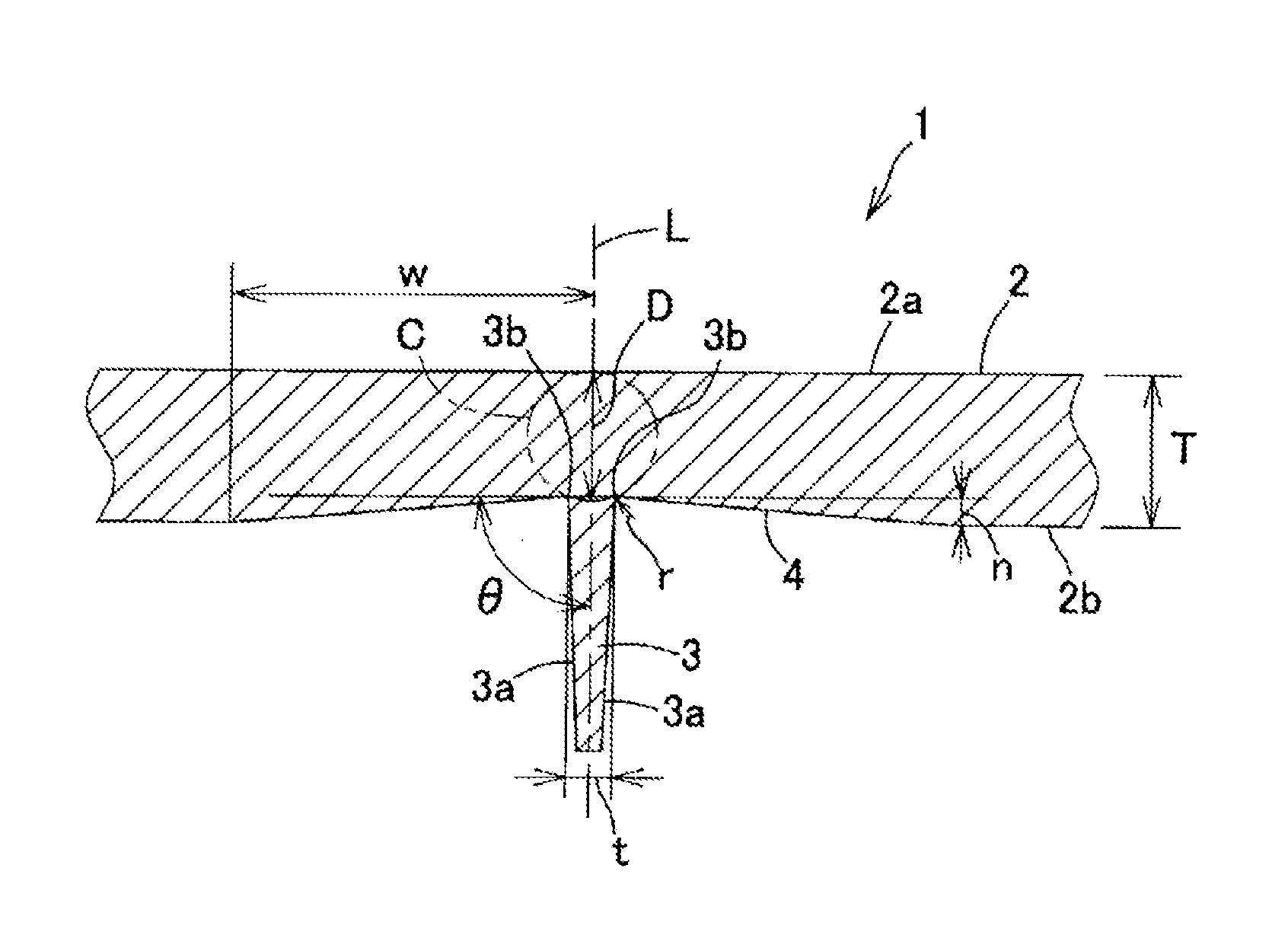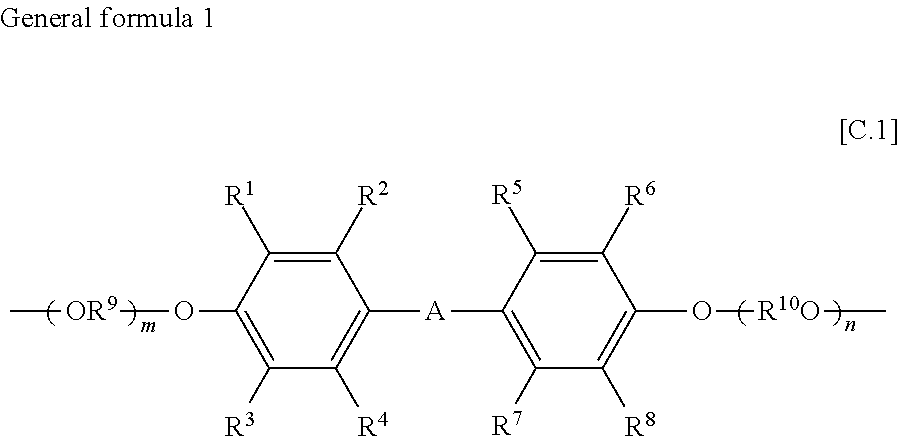Moulded body having specific cross-sectional structure
a cross-sectional structure and moulding technology, applied in the field of moulding bodies, can solve the problems of poor moldability, poor chemical resistance, and dependence of impact strength on thickness, and achieve the effects of suppressing or preventing the generation of sink marks, reducing the difference in resin amount, and reducing the difference in resin temperature drop ra
- Summary
- Abstract
- Description
- Claims
- Application Information
AI Technical Summary
Benefits of technology
Problems solved by technology
Method used
Image
Examples
example 1
[0098]The resin composition of the present invention will next be specifically described with reference to examples.
[0099]In the following measurement conditions, examples, and the like, “part” and “%” mean “part by weight” and “% by weight”, respectively.
[0100]First, the materials used and measurement conditions will be described below.
[0101](Polycarbonate Resin)
[0102]The polycarbonate resin used was TARFLON A2200 (registered trademark) having a viscosity average molecular weight of 22,000 manufactured by Idemitsu Kosan Co., Ltd. It is represented as PC (A-1) in Table 2.
[0103](Polyester-Polyether Copolymers: B1 to B11)
[0104]In a reaction vessel equipped with a stirrer and a gas outlet, polyethylene terephthalate (IV=0.65) prepared with a germanium catalyst, the modified polyether shown in Table 1, 400 ppm of germanium dioxide, and 2,000 ppm of a stabilizer (Irganox 1010 manufactured by Ciba Specialty Chemicals) on the basis of the total amount of the polyethylene terephthalate and ...
examples 1 to 8
, COMPARATIVE EXAMPLES 1 to 4
[0133]The resin composition of Production Example 5 was molded with an injection molding machine FE360S100ASE manufactured by Nissei Plastic industrial Co., Ltd. at a cylinder temperature of 280° C. and a mold temperature of 80° C., yielding an automobile panel part having a size of 600 mm×100 mm, or the large injection molded product having the rib structure shown in Table 4 and Table 5 as a test piece, and the moldability was evaluated. The part was coated with paint and then was visually observed whether sink marks were present or not. The evaluation standard was shown below. Table 4 and Table 5 also show the prediction results of sink marks calculated with CAE simulation, Mold-Flow.
[0134]Moldability
[0135]∘: Ribs are completely filled with a resin composition.
[0136]x: Ribs are not completely filled with a resin composition (short shot),
[0137]Evaluation of sink mark
[0138]∘: No sink mark is visually observed.
[0139]Δ: Sink marks are observed only when a ...
PUM
| Property | Measurement | Unit |
|---|---|---|
| thickness | aaaaa | aaaaa |
| thickness | aaaaa | aaaaa |
| thickness | aaaaa | aaaaa |
Abstract
Description
Claims
Application Information
 Login to View More
Login to View More - R&D
- Intellectual Property
- Life Sciences
- Materials
- Tech Scout
- Unparalleled Data Quality
- Higher Quality Content
- 60% Fewer Hallucinations
Browse by: Latest US Patents, China's latest patents, Technical Efficacy Thesaurus, Application Domain, Technology Topic, Popular Technical Reports.
© 2025 PatSnap. All rights reserved.Legal|Privacy policy|Modern Slavery Act Transparency Statement|Sitemap|About US| Contact US: help@patsnap.com



